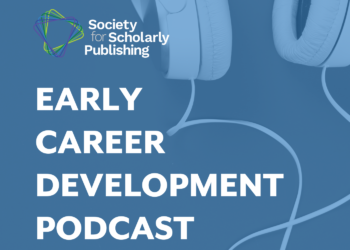Editor’s Note: Today’s Mental Health Awareness Mondays guest post is by Marjorie Hlava, Chief Scientist at Access Innovations, Inc. It is intended to supplement February’s post, Categorizing Mental Health Research by Hélène Draux.
An important part of mental health awareness is knowing what resources are available. There are a lot of databases, publications, helplines, etc. and they are often supported by a controlled vocabulary, like a taxonomy, or thesaurus. Sometimes they are classifications, outlines, or decision trees. The nature of the content, and therefore the tracking of the data, will be determined by the taxonomy or outline of knowledge that is used as the classification tool (a.k.a taxonomy or thesaurus or ontology) the same data or content will showcase differently with different outlines. Some of these systems are mentioned in last month’s Mental Health Awareness Monday post: Categorizing Mental Health Research by Hélèn Draux, but they only represent a subsection of the available options. While still not an exhaustive list, in this post I will share some additional available material.
Several organizations include mental health classifications as part of their main taxonomy – like NLM’s MeSH and the Thesaurus of Psychological Index Terms from the American Psychological Association. Each organization treats the classifications in a different way, depending on their main organizational focus. Some agencies also classify mental health in conjunction with their main mission. Prisons may treat the organization of data differently than homeless agencies. It is certainly not unique to any particular country or area of study. The organization of the data is always from the perspective of the creator. It should be sensitive to, and representative of, the content actually being covered or held in a data repository,
The premier system is the DSM (Diagnostic and Statistical Manual of Mental Disorders). Published by the American Psychiatric Association, DSM is one of the most widely used taxonomies for classifying mental disorders. It is currently in its fifth edition (DSM-5) and provides criteria for diagnosing various mental health conditions.
MeSH (Medical Subject Headings) from the National Library of Medicine (NLM), also mentioned in Hélène’s post, includes a section on mental health under the main heading of “Mental Disorders,” as well as various subheadings and terms related to specific conditions, treatments, and aspects of mental health, including Mental Disorders, Mental Health, Psychiatry, Psychology, Psychotherapy, Mental Health Services, Mental Health Professionals, Mental Health Policy, Mental Health Promotion. There are many additional terms and areas listed under these particular branches used to index the materials about the subject in the Medline Database.
Going another step up the chain is the Unified Medical Language System (UMLS), which has a more comprehensive taxonomy for mental health. This is because the UMLS is a collection of about 155 biomedical vocabularies and standards gathered by the NLM and integrated into a large vocabulary to support search and tagging. The UMLS mental health concepts are organized more broadly as follows:
Mental Disorders: Includes various mental health conditions, such as mood disorders, anxiety disorders, psychotic disorders, personality disorders, etc.
Mental Health Care: Covers aspects related to the provision of mental health services, including treatment modalities, therapeutic approaches, healthcare facilities, and professionals involved in mental health care.
Mental Processes: Encompasses cognitive and emotional processes, including concepts related to perception, cognition, memory, emotion, and consciousness.
Psychiatry and Psychology Disciplines: Includes concepts related to the fields of psychiatry and psychology, including subdisciplines, theories, and methodologies.
Mental Health Professionals: Covers professions and roles involved in mental health care, such as psychiatrists, psychologists, counselors, social workers, etc.
Psychiatric and Psychological Phenomena and Processes: Includes concepts related to the manifestations and processes of mental health conditions, including symptoms, signs, diagnostic criteria, and psychological phenomena.
Other vocabularies of note for mental health include:
- ICD (International Classification of Diseases). Developed by the World Health Organization (WHO), the ICD is a global standard for diagnosing and reporting diseases and health conditions, including mental disorders. It is used throughout the world as an aid to coding and classifying doctor visits and other medical encounters added to the electronic health records of patients. In the US, it forms the basis for billing medical services through Medicare and other insurance coverage. The current version, ICD-11, has about 178,000 codes. ICD-10 had about 17,000 codes and this huge increase delayed implementation by many years because people were afraid it would cripple the healthcare systems, and interfere with other interfaces.
- CCMD (Chinese Classification of Mental Disorders): Used in China, CCMD is similar to the DSM, but tailored to the cultural and clinical needs of the Chinese population.
- CFTMEA (Classification française des troubles mentaux de l’enfant et de l’adolescent): This is the French classification system for mental disorders in children and adolescents.
- ICF (International Classification of Functioning, Disability and Health): While not solely focused on mental health, the ICF provides a framework for understanding functioning and disability across all health conditions, including mental disorders.
- PDM (Psychodynamic Diagnostic Manual): Developed by the Alliance of Psychoanalytic Organizations, PDM offers an alternative to the DSM, focusing more on psychodynamic and psychoanalytic perspectives in diagnosing mental health disorders.
- Research Domain Criteria (RDoC): This is a new outline currently proposed by the National Institute of Mental Health(NIMH). It aims to classify mental disorders based on underlying neurobiological dimensions rather than traditional symptom-based categories.
This should not be taken as a comprehensive list but rather an indicative one. Each taxonomy / vocabulary listed about has been purpose built for a particular area. Needs are unique and carefully track the content and the user community the taxonomy is built to serve.


